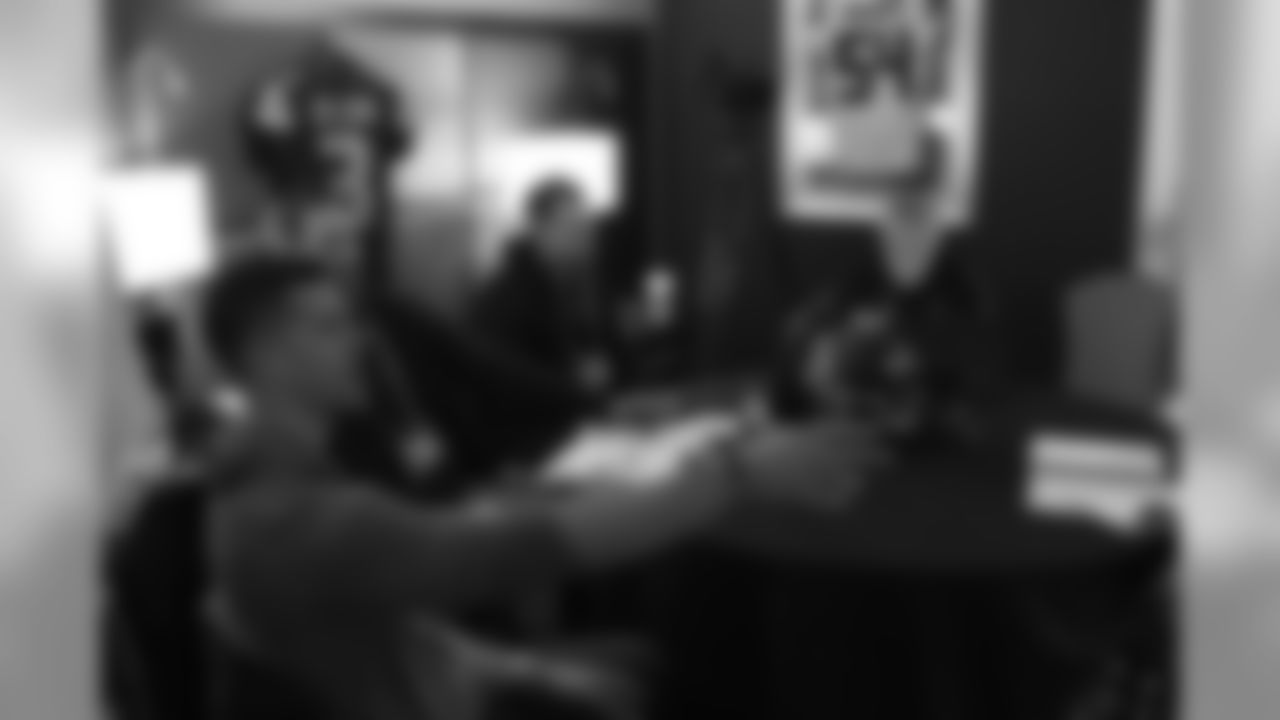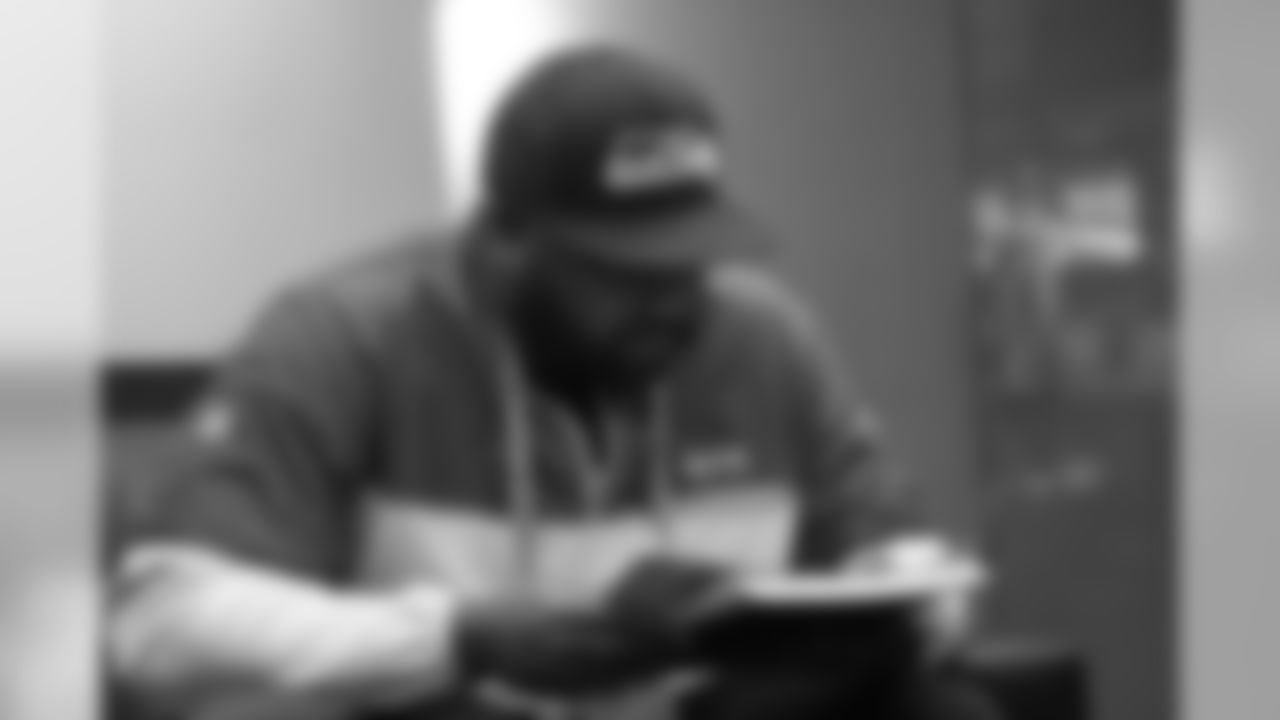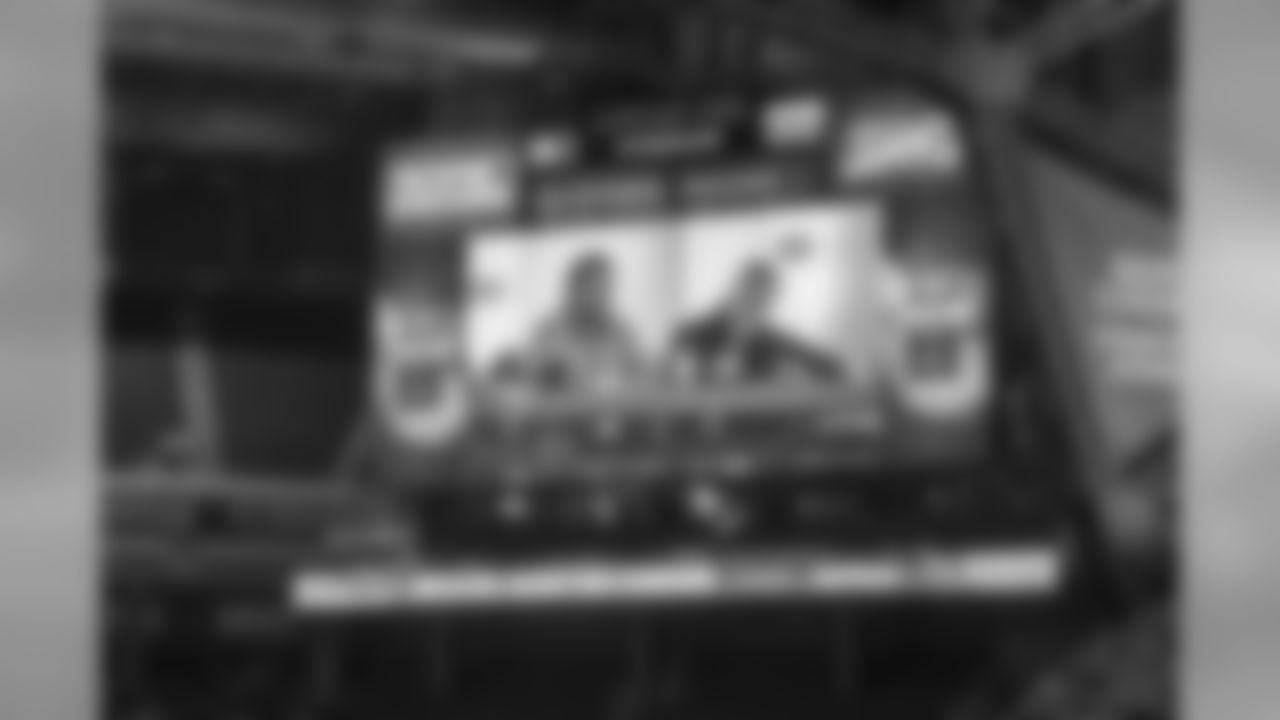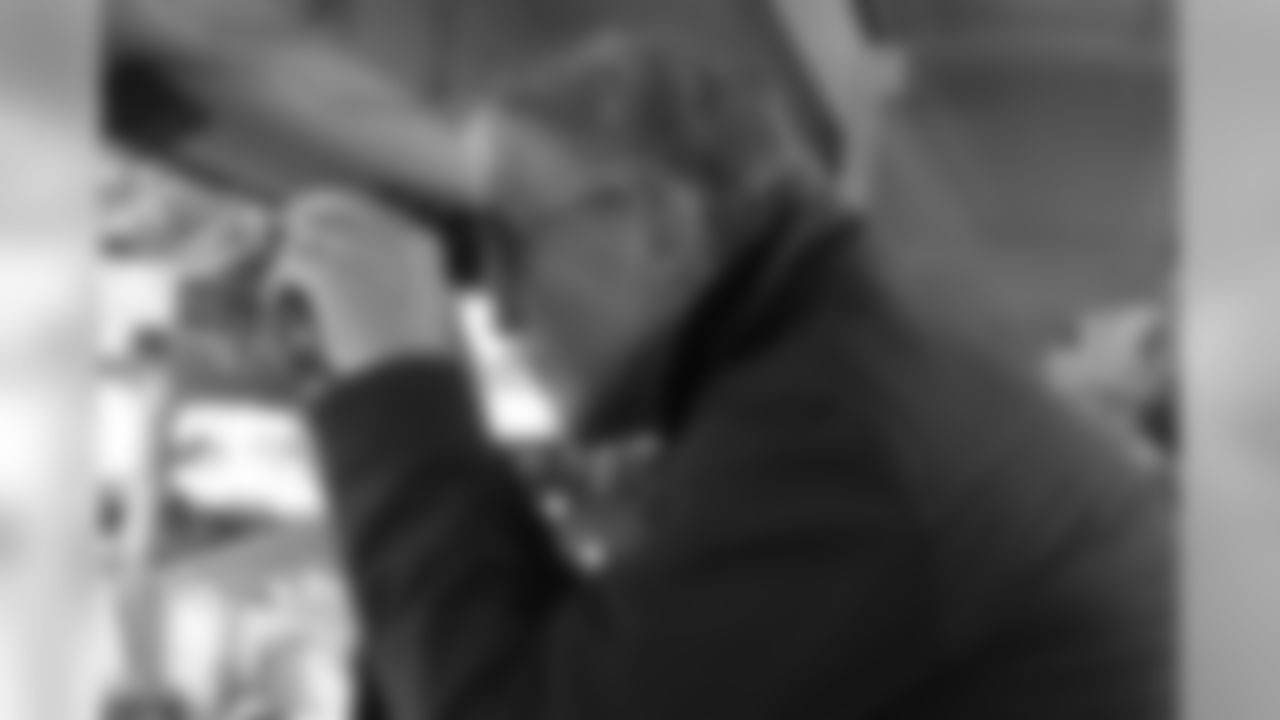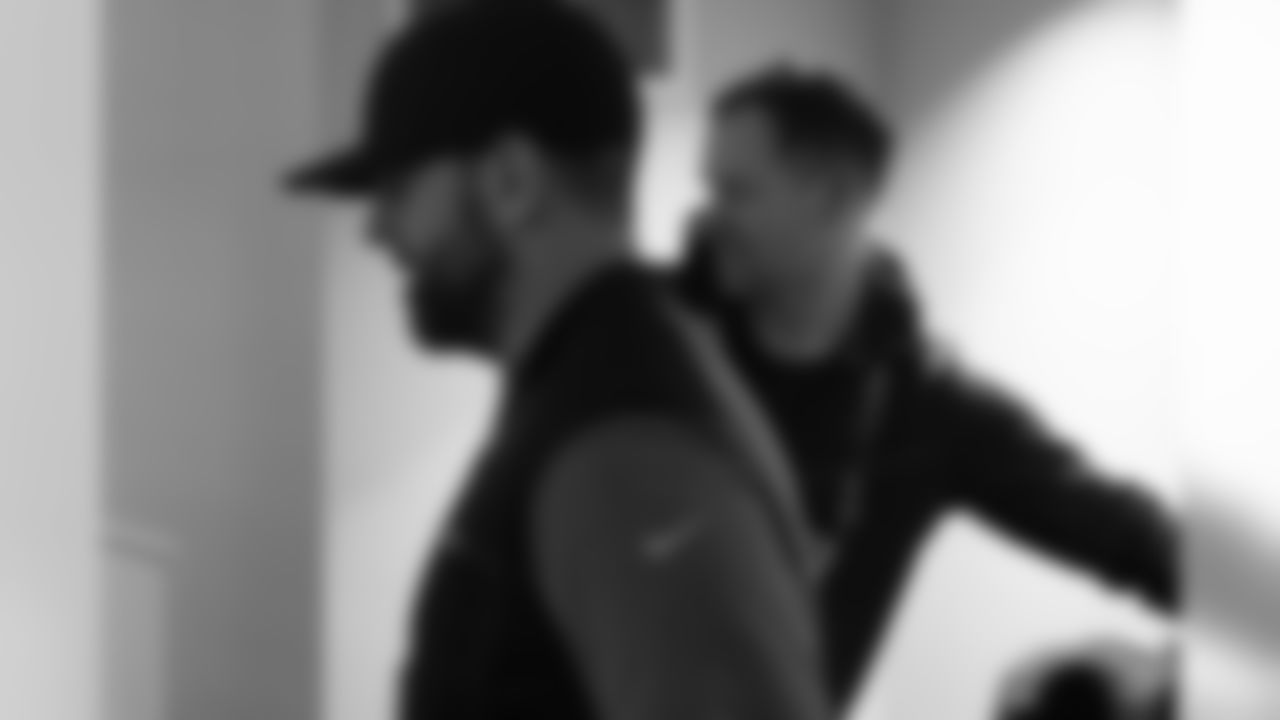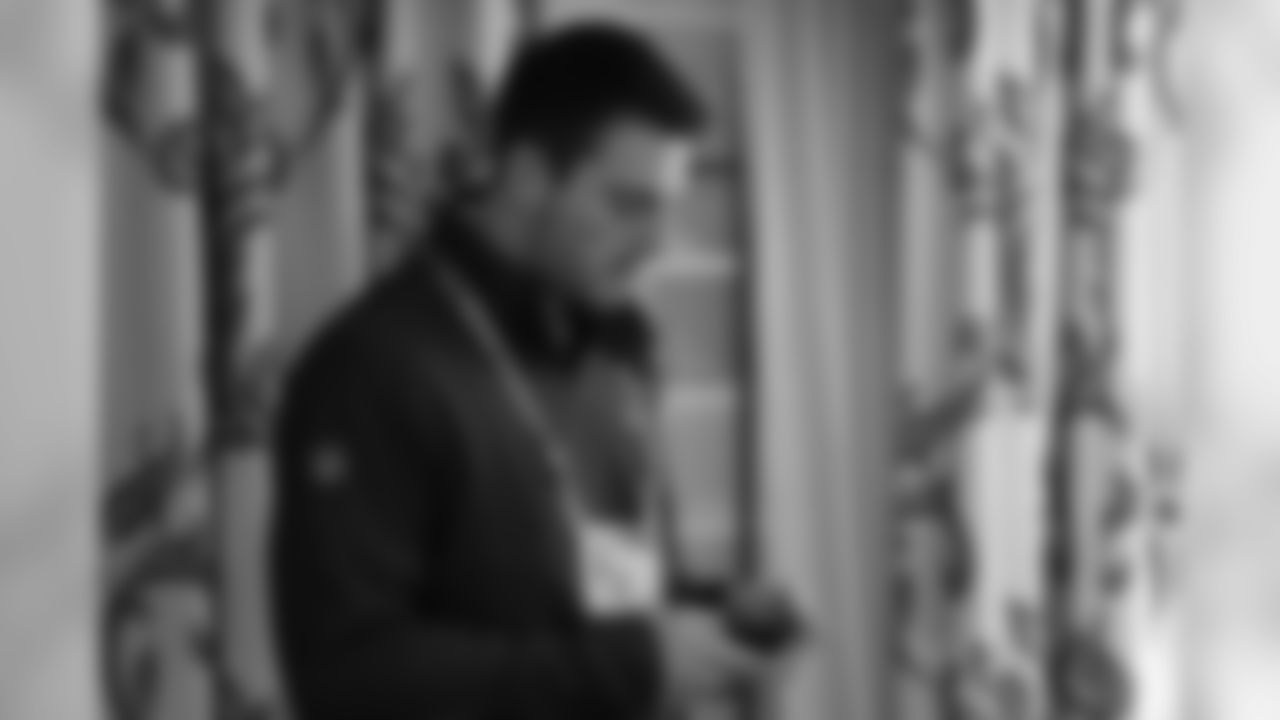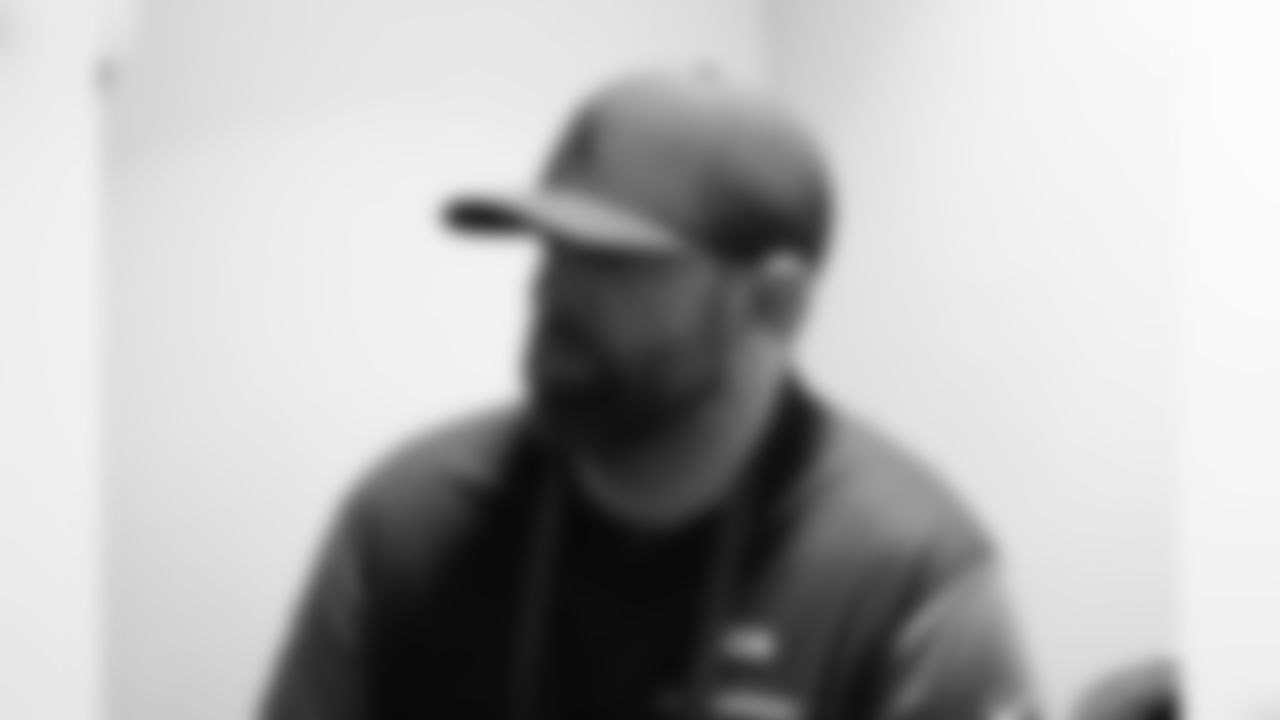INDIANAPOLIS—It's 10:15 on a Wednesday night, and the kitchen at St. Elmo is still humming. Jeremy Holmes, the executive chef of this 117-year-old Indianapolis institution, plates up lobster tail after lobster tail next to eight-ounce cuts of filet mignon, creating a long line of surf 'n turf plates that will eventually be rung up for $81 apiece.
Soon, those plates will find their way to tables most likely occupied by NFL executives or coaches or agents, or by member of the media who are there not just for a drink or a meal, but to network and potentially get a scoop from those aforementioned groups.
Welcome to the NFL Scouting Combine that you don't see on television.
As much as the combine has become a big event on the NFL calendar, complete with non-stop coverage on the NFL Network, so much of what matters most during this week in Indianapolis takes place both behind-the-scenes in the form of physicals and interviews, and in plain sight at restaurants and bars throughout downtown Indianapolis, most notably at St. Elmo and at Prime 47, another high-end steakhouse that transforms into Indy's most popular late-night scene during the combine.
Just a few steps away from the kitchen is St. Elmo's bar, which is packed both because it's nearly impossible to get a reservation here if you didn't plan well in advance for combine week, but also because everyone heading into the huge restaurant's multiple dining rooms has to pass through here… well, unless you're Peyton Manning or David Letterman—that level of Indy fame affords you access to a secret entrance not used by the public. In other words, a seat in the bar allows you to keep tabs of just about everyone coming and going throughout the night.
Almost as crowded is the upstairs 1933 Lounge, where on the wall there's an old framed newspaper dated Dec. 5, 1933 that reads: "PROHIBITION ENDED AT LAST! Bartenders poised for drinking rush."
Eighty-five years and a couple months later, the drinking rush continues, as it does every year when the combine comes to town. Once a pre-draft event held in a central location so teams could do medical evaluations on prospects, the combine has grown into a massive event—the Seahawks alone credentialed more than 70 people this year between coaches, scouts, team doctors, athletic trainers, strength and conditioning staff, video staff, communications staff and public relations staff—one that trails only the Indianapolis 500 as a revenue generator for a downtown establishment such as St. Elmo, Holmes said.
The 1933 Lounge is nearly as crowded as the main bar downstairs, and patrons swap stories while sipping on cocktails, wine and beer or while eating St. Elmo's famous shrimp cocktail, complete with its sinus-clearing horseradish sauce.
While the vibe is casual, some very important conversations can take place on any given night at places like this, Prime 47 or the bars inside the JW Marriott, the hotel that is home to most NFL personnel during the combine. Agents meet with general managers or scouts, and while contracts aren't signed over steak and lobster, the framework of a contract extension just might take place here instead of at a team facility. While these conversations take place in a very public setting, the crowd noise is a perfect cover to conduct private conversations out in the open. And it's not all deal-making, the combine and the nightlife that comes with it is also all about networking and catching up with old friends.
When former Panthers, Broncos and Bears head coach John Fox walks in, a loud voice booms, "Fox!" and the former coach is quickly across the bar to greet longtime NFL scout and front office executive Tony Softli with a hug. Softli, who is now the director of scouting for the Alliance of American Football, makes a round of introductions, Fox chats for a while, then is off to another group of well-wishers. Of all the interesting aspects of the combine, perhaps nothing is more unique than the way, for a few days in Indianapolis, it is completely normal to see head coaches, general managers and even owners out on the sidewalks of downtown Indianapolis or in high-end restaurants—or if it's late enough, at the Steak 'n Shake on the corner of Maryland and Illinois.
"We love it," Holmes said of St. Elmo's role in combine week. "Me personally, I'm a huge NFL fan, so to see all the guys you see on TV walk through here, then you see the future players come in, it's huge. We love it every year."
Richard Edwards, the general manager of St. Elmo, is by his own admission not much of a sports fan, but he can see in the interaction between regular diners and this week's NFL visitors why this is a special week for his city.
"One of the best parts for me, I saw this two or three years ago, it was a father-daughter situation, they sat at one of these bar tables, and the glee on this girl's face when she saw recognizable sports figures come walking through, just seeing the interaction and the genuine interaction from coaches, from players to our normal guests, it's refreshing to see," Edwards said hours earlier as the patrons began walking in the door 15 minutes or so before the restaurant's official 4 p.m. opening.
By 11 p.m. or so, St. Elmo remains at or close to its capacity of roughly 500 people, bars included, but by now the party is also going strong a few blocks away at Prime 47, where a large media contingent is on hand both looking for news sources and for a chance to push through the crowd to the bar to order a drink. On this night, Cowboys Owner Jerry Jones has his bus parked outside, an unofficial combine Bat-Signal, if you will, that this is the place to be.
"It's like a big research project."
As big as the combine has become, nobody involved is under the impression that this is the be-all and end-all of the talent evaluation process. Due in large part to the medical evaluations and player interviews, the combine is an important piece of the puzzle, but nothing trumps a player's body of work on the football field that scouts have been studying for multiple years.
As Matt Berry, the Seahawks director of college scouting describes it, the key to scouting is not just finding talented players, but trying to learn the person as well, then combining the skillset with the person and figuring out if that player will be a fit with the team.
"It's like a big research project," Berry said from the stands at Lucas Oil Stadium while watching offensive linemen go through their on-field workouts.
And yes, part of that research project involves physical ability, which is why Berry and other Seahawks coaches and scouts leave the JW Marriott at 6:30 a.m. on a Friday to see defensive linemen get measured and weighed and to time offensive linemen and running backs running the 40-yard dash. But a big part of the combine is the more inexact science of learning, as Seahawks general manager John Schneider has been known to phrase it, "what's in a man's heart."
Scouts spend so much of their lives on the road—the Marriott app on Berry's phone shows he has 2,971 nights over the past 17 years, or 7.6 years—not just to see players, but to get to know them. At the combine, that process is compressed significantly, but it's still important, especially because coaches who for most of the year are focused on the team's current roster get to spend time with potential draft picks.

On an afternoon walk between Lucas Oil and the JW Marriott, Berry, Seahawks co-director of player personnel Scott Fitterer and Colts assistant general manager Ed Dodds, who prior to joining Indianapolis in 2017 was the Seahawks' senior personnel executive, traded notes on players one team has interviewed and the other team has scheduled to interview in the next couple of nights.
A couple of hours later, Berry, head coach Pete Carroll, co-director of player personnel Trent Kirchner, offensive coordinator Brian Schottenheimer and receivers coach Nate Carroll sat around a table inside of room 130 at the Crowne Plaza Hotel, awaiting that night's first interview, a receiver who will walk into the room at 6:15 for an interview that will last precisely 15 minutes, with an air horn sounding first for a two-minute warning, then again at the end of the interview.
As the night progresses, position coaches rotated through the chair initially held by Nate Carroll, depending on the player being interviewed, and defensive coordinator Ken Norton Jr. took Schottenheimer's place when a defensive player came in. A couple of interviews into the evening, John Schneider joined the group, late because of a meeting, and immediately made a sarcastic comment about how good the room smells. Schneider then did something someone should have thought of sooner, turning on the air conditioner in the room to help with the heat and smell—he wants this shrewd move documented on the record.
These interviews are a mix between casual get-to-know-you banter and film study, but there's also value in just seeing how a player handles what is a very exhausting and stressful week. One receiver was asked to justify his on-field reaction to a negative play: "Is that how you want to be presenting yourself?" Carroll asked.
Another receiver, who overall came across very well in his interview, allowed his nerves to show at one point, explaining, "I always had a shoulder on my chip." After an awkward pause, he caught the error, saying, "I mean, chip on my shoulder," and laughter broke the tension in the room.
As players shuffled in and out, so too did the coaches and scouts, depending on the position of the player or the region he is from. In the hallway outside the room, conversation can range from the quality of a previous interview to the previous night's dinner at Prime, which went way too late for most people's liking.
But while these formal interviews are important, not all of Seattle's coaches and scouts are in or around room 130.
"It's just a free-for-all. You basically are getting kidnapped left and right."
While the interviews taking place in hotel rooms in the Crown Plaza are a structured affair—teams submit a list of up to 60 players to interview prior to the combine and they're limited to exactly 15 minutes each—there is another informal interview process that takes place throughout the combine that is equally important, though a little more chaotic.
One of the questions frequently—OK, too often—asked of prospects by media at the combine is, "Have you met with (insert team here)." Often times, a player will say something along the lines of, "I had an informal with them."
Most of those informal take place in a ballroom at the Crowne Plaza unofficially known as "The Train Station," a nod to the building's history as Indianapolis Union Station before it was a hotel.
Even this part of the combine has become more organized in recent years, but it's still something of a free-for-all, with all 32 teams having a table in the ballroom where scouts and position coaches can have a quick chat with draft prospects who they can catch coming and going from nearby parts of the hotel. Players are constantly in and out of the Crowne Plaza, for everything from psychological testing to meetings with companies hoping to woo them into endorsement deals, and teams are ready to pounce on a chance at an extra meeting with a potential draft pick. In recent years, technology has helped organize the train station process a bit, with video boards now displaying what players are in the ballroom at any given time, but it's still controlled chaos compared to the formal interview process.
"It's just a free-for-all," Seahawks tight end Nick Vannett said of the train station. "You basically are getting kidnapped left and right… You have to go through there to get a lot of places. It's like a mosh pit in there. Somebody will tap your shoulder, then you talk with them. There were times when I'd have two or three teams just kind of hovering behind me waiting until I was done meeting with somebody else. It was pretty crazy."
Crazy is the perfect word to describe not just the train station, but much of the entire combine week. And while what you see on TV can be entertaining and important in its own way, the things most people don't see, everything from surf 'n turf at St. Elmo to "getting kidnapped" in the train station are in many ways the lifeblood of this event.
Photos from Day 4 at the 2019 NFL Scouting Combine in Indianapolis, Ind., where Seattle Seahawks coaches and personnel staff are evaluating more than 300 of college football's top professional prospects ahead of this year's draft.
